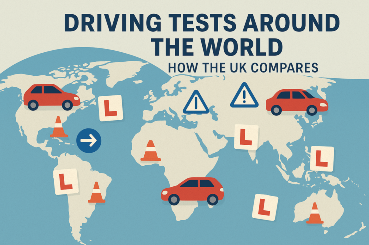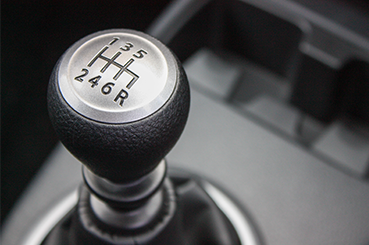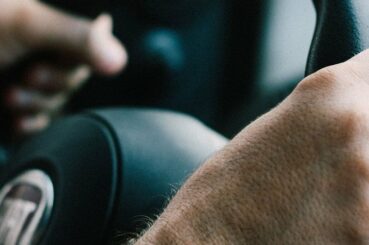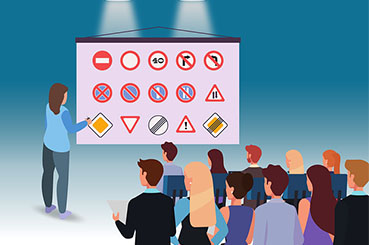Feeling nervous about your driving theory test? You’re not alone! But don’t worry, we’re here to help you ace it.
This blog post will be your one-stop shop for all things DVSA driving theory test-related. From understanding the two main parts of the test to answering those pesky little questions that might be swirling around in your head, we’ll guide you through the entire process with confidence.
Whether you’re a complete beginner or just looking for a refresher, this post will equip you with the knowledge and resources you need to conquer the theory test and get one step closer to hitting the road!

When Will My Driving Theory Test Be Taken?
Your driving theory test will be taken before your practical driving test and is one of the first steps on your journey to becoming a qualified motorist in the UK. The theory test is set by the DVSA and is designed to assess your understanding of highways and road safety, alongside helping you understand your awareness as a motorist.
How Do I Book a Driving Theory Test?
You can book your theory test online on any government website, this will cost you £23 per attempt. To book the test, you will require your driving licence, email address, and payment method. Theory tests will take place at your local assessment centre, which can be found on the gov.uk website.
What Should I Bring to My Driving Theory Test?
You must take your UK photo-card driving licence for your test. If you do not supply this at the test centre your test will be cancelled, and money refunded. You cannot take personal items into the test with you. This includes bags, earphones, mobile phones or watches. There will be a locker provided so you can store these in whilst you take your test.
How Does the Driving Theory Test Work?
The test will be carried out on a computer in which you will answer multiple choice questions and complete a hazard perception test. A practice session will take place and last 15 minutes before you begin your driving theory test, giving you some time to get comfortable with how the questions are answered and how the test will be completed. More information is below.
What Does the Theory Test Consist Of?
A common misconception is that the test is a bit of a slog; however, the driving theory test is kindly split into two separate sections to give you a bit of a breather.
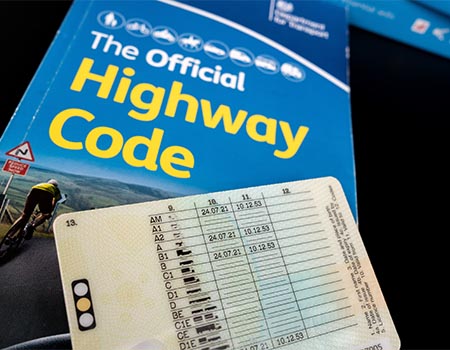
Multiple Choice Questions
This is the first section of your driving theory test, followed by the hazard perception test.
What Will My Driving Theory Test Questions Focus On?
The first section of your theory test will be a series of 50 multiple-choice questions that aim to assess your understanding of the highway code, vehicle safety, driving safety, and how you deal with road incidents. Prepare yourself for questions in relation to vehicle safety, hazard awareness, types of vehicles on the road, essential driving documents, and your attitudes and alertness to road incidents.
How Many Questions Do I Need Right to Pass My Driving Theory Test?
To pass this section of your theory test, you will be required to have correctly answered 42 out of the 50 questions (i.e. 86%).
Are The Questions on My Driving Theory Test Randomly Selected?
The DVSA has a bank of set questions that will be assigned to you randomly, making each attempt different from the last. Luckily enough, there will be no trick questions throughout the test.
How Long Does the Driving Theory Test Take?
You will have a total of 57 minutes to complete this section of your theory test, giving you enough time to check at the end. We recommend taking your time and checking each question carefully.
Hazard Perception Test
This is the second part of your theory driving test and will commence after the 50 multiple-choice questions.
What Happens in The Hazard Perception Part of The Theory Test?
Once started, the computer screen in front of you will present you with a series of 14 real-life clips. These clips will involve a hazard that you need to stop in real time and flag by clicking the computer’s mouse. This will test whether you are capable of spotting the hazards presented in the situation and have the reaction time to evade them.
How Will I Be Assessed in My Hazard Perception Test?
You will be assessed on how well you spot and anticipate the potential hazards on the road. If you spot a particular hazard too slowly, then your score will be penalised.
How To Pass My Hazard Perception Test?
Up to five points can be awarded for each hazard, with you needing at least 44 out of 75 points to pass the test. Clicking too often can actually help you lose points – so don’t get too trigger-happy with that mouse.
Hazard Perception Test Practice
Practice makes perfect, and you can practice your hazard perception test by identifying hazards and training your reflexes to react to them. There are also videos you can find that can act as a mock test of the main one, so get out there and try your best to prepare.
What Happens After I’ve Completed My Theory Test?
Now both sections of your theory test have been completed, head to the entrance of the test centre and present your licence to the member of staff when prompted to do so. Within minutes, you will receive the results of your driving test. Here you will find out if you have passed or failed.
What If I Didn’t Pass My Driving Theory Test?
We have all been there, but don’t worry! Simply rebook your test after waiting three working days. You will be required to complete both sections again, even if you passed one on the first attempt – so make sure you’re ready!
How To Prepare for Taking the Theory Test Again?
Try to figure out the things you were not confident about during the test and focus on them whilst revising. Some people learn in different ways, we even have a blog explaining the different types of learning and guiding you through the process depending on how you learn.
Make sure you revise and prepare as much as you can to get yourself ready for your next attempt. If you think you need additional help, why not check out our blog for the top tips for passing your driving theory test via the button below?
What Do I Do Once I’ve Passed My Theory Test?
Congratulations! You passed your driving theory test, we always knew you could do it!
At the test centre, you will receive a letter with a pass certificate number, which you will need to book your driving test. This certificate and number only last two years, so be sure to pass your driving test within its timeframe otherwise you will need to pass your theory test again.
The Next Step to Becoming a Driver
Now you have completed your driving theory test, you can work towards completing your practical driver’s test. The next steps to becoming a driver are ahead of you, stay confident, don’t give up, and you’ll be on the road in no time.
If you want more information or feel like you need to improve your confidence, then view our blog to help you pass your practical driving test. Click the button below to head there now!
Theory Test FAQs
How Long Does a Driving Theory Test Last?
You will have a total of 1 hour and 20 minutes to complete both sections of your driving theory test, 57 minutes for the multiple-choice section and 20 minutes for the hazard perception section. A 3-minute break is available in between the sections if needed.
How Old Do I Need to Be to Take My Driving Theory Test?
In order for you to take your theory driving test, you must be at least 17 years of age. This will need to be proven when booking your test, as well as when you arrive at your testing facility.
Do I Need My Provisional License to Take My Theory Driving Test?
You are required to have your provisional license when taking your theory driving test.
Can I Take Driving Lessons Before My Driving Theory Test?
Although it is recommended to take your driving theory test before taking driving lessons, you are capable of taking driving lessons before your theory test.
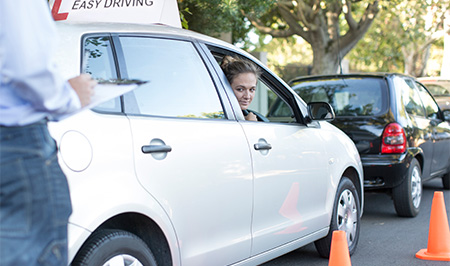
What Happens If I Have a Disability or Health Condition?
If you have reading difficulties, you can take the test audibly using headphones. If required, you can take extra time on the test, have someone read to you what’s on the screen and then record your answers, and also have someone reword the question for you. You can apply for test support with a letter or report from a teacher or medical professional.
